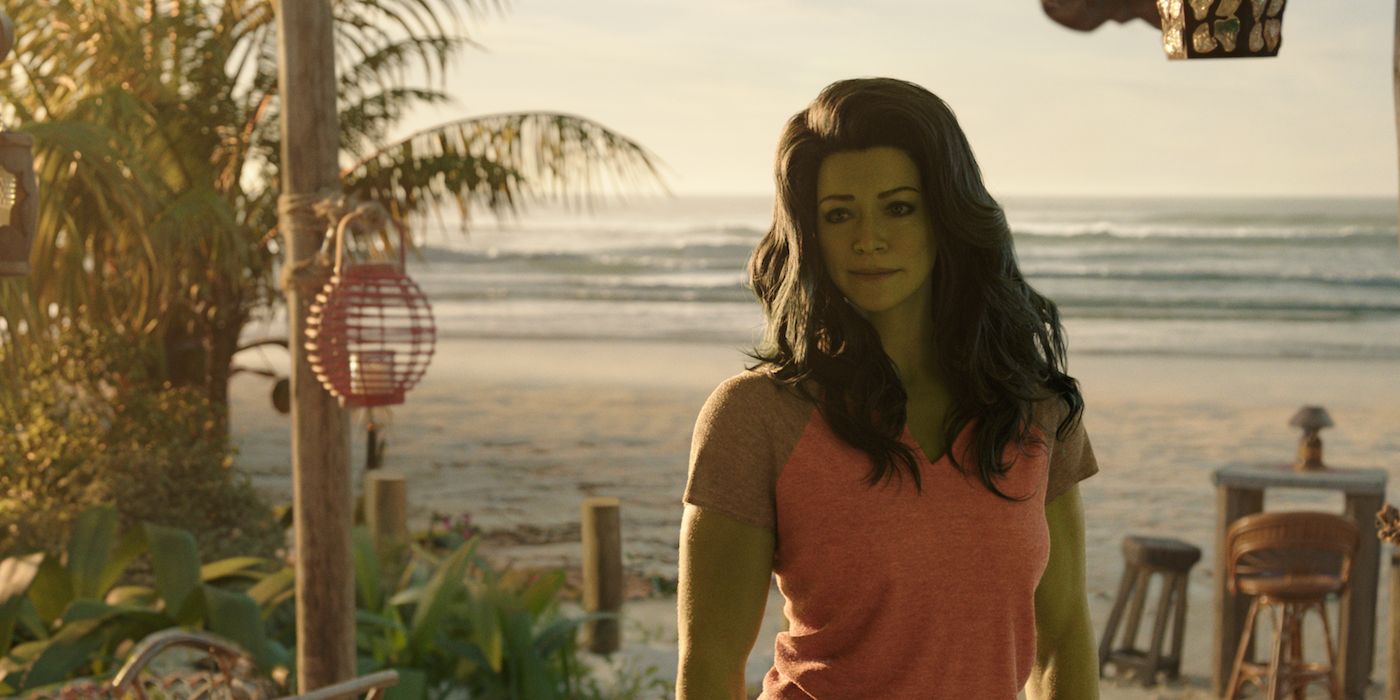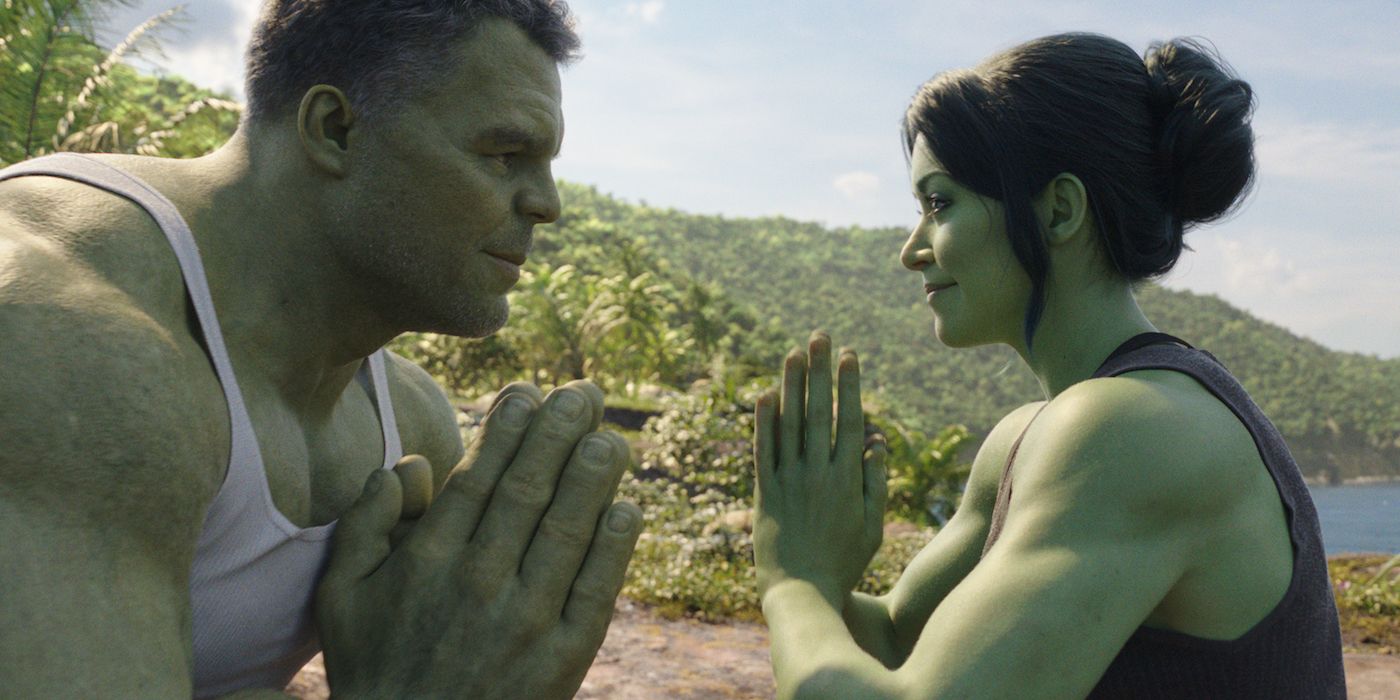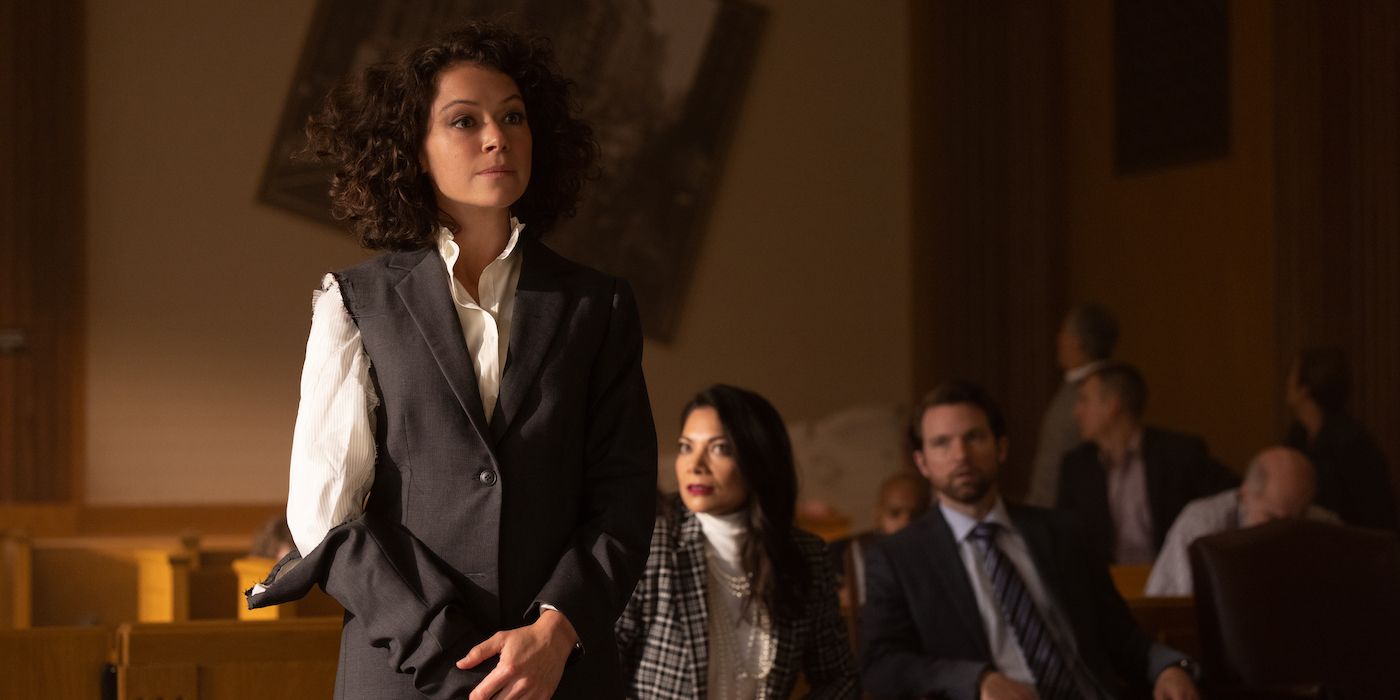The Marvel Cinematic Universe’s expansion to television has been hit or miss. Ms. Marvel, one of the best shows the MCU’s Disney+ slate had to offer, balanced heart, humor, action, and depth without foregoing the heroics. She-Hulk: Attorney at Law, the latest MCU entry, has the occasional sense of humor, but it’s lacking almost everything else. She-Hulk’s goals are different, to be sure, as is its format. There is no doubt the show can be very enjoyable, and there are aspects of the series audiences will certainly find entertaining, including the notable guest stars. But She-Hulk herself is an underdeveloped character, which leaves the first four episodes (which were provided for review) feeling somewhat void and aimless despite the humor.
She-Hulk begins by introducing Jennifer Walters (Tatiana Maslany) in her element. She’s preparing her closing statements for a big case she’s expected to win. Before the scene’s over, friend and paralegal Nikki Ramos (Ginger Gonzaga) references She-Hulk, leading Jennifer to speak directly to the camera as she recalls the incident that turns her into the 6-foot-7-inch tall and green version of herself a few months prior. Long story short, Jennifer and cousin Bruce Banner (Mark Ruffalo) are in a car accident that gives her a cut on her arm. When Bruce’s blood comes into contact with hers, Jennifer is transformed into the green-hued She-Hulk. She spends the entirety of the first episode training with her cousin, though it’s quickly realized that Jen can control her powers, transforming at will while also maintaining her consciousness. No alter ego, no anger rampages through the city. Jennifer doesn’t want to become a superhero, but she’s forced to save the jury when super-powered influencer Titania (Jameela Jamil) bursts through the courtroom in a rage. The incident brings Jen’s She-Hulk side out to the public, forcing her to contend with a double life, how it affects her job, her personal relationships, and her desire to be “normal.”
She-Hulk: Attorney at Law is nowhere near the best show Marvel has put out on Disney+ (at least based on the first four episodes). By the end of the fourth episode, it’s hard to determine who Jennifer/She-Hulk is as a person because her character development is half-baked. She-Hulk’s biggest obstacle is that she just wants to be Jen, live a regular life, and have typical relationships. The world wants to see more of She-Hulk instead, which frustrates her. But what the series doesn’t quite capture is why she sees She-Hulk as such an inconvenience to her previous life when it is not established or explored before the transformation. There is an obvious disconnect there that head writer Jessica Gao and her team don’t seem in a rush to delve into, with She-Hulk consumed with the shenanigans of the (very many) familiar faces from across the MCU who make an appearance.
Although Jennifer Walters is quick to remind viewers that it is a “lawyer show,” even while commenting on the excitement of the cameos, it’s as though the series is excusing the fact that it isn’t offering much in the way of plot or character development by pointing out its awareness. As for the characters themselves, most of them are poorly developed, with She-Hulk’s characterization suffering the most because of the surface-level writing for her. Jennifer explains that she’s better at controlling her anger than Bruce because she does it all the time as a woman. While true, such lines of dialogue do the character a disservice by telling rather than showing. This becomes frustrating when one realizes that most everything Jennifer goes through is not a result of the choices she’s actively making on her own, but a reaction to others.
All that said, She-Hulk: Attorney at Law isn’t a complete loss. It can be very enjoyable and each post-credits scene after every episode is funnier than the last. It has plenty of meta and chuckle-worthy moments, most of them elevated by Tatiana Maslany’s great comedic timing. The actress’ performance is superior to the series itself, and the guest stars — including Tim Roth as Emil Blonsky/Abomination and Benedict Wong as Wong — are top-notch as they make the best of their screen time. The MCU series is especially funny when it references the wider MCU, and there is a particular Captain America joke that has a great payoff. However, there are certain elements, like She-Hulk’s relationship with the media (as well as the media’s portrayal of her) and her identity crisis, that just don’t land. The series even tries to shoehorn in a court case involving Jennifer’s former colleague and an Asgardian that is unnecessary. The CGI doesn’t always work, though it’s far better than any of the trailers have shown.
There’s at least an effort to ground the series in a world full of superheroes, and it showcases just how chaotic that side of things can be. To be sure, She-Hulk: Attorney at Law has five more episodes to turn things around, and there is potential for the show to get better and grow. The basic building blocks are there, the cast is great, and it can be fun on occasion. But as of the first few episodes, the series doesn’t seem interested in exploring its titular character, nor does it take the time to focus on her beyond the surface. The overall disconnection to Jennifer Walters/She-Hulk leaves the series bereft of any heart, making it difficult to get fully invested in where the series might be going.
The first episode of She-Hulk premieres Thursday, August 18 on Disney+. The season consists of nine 30-minute episodes that will release weekly.



